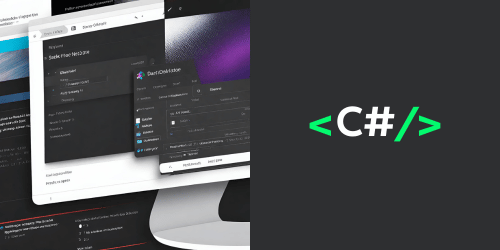What Are Generics?
Introduced in .NET 2.0, generics allow the creation of classes, structures, interfaces, and methods with placeholders (generically referred to as type parameters) for the types they operate upon. This capability means you can design a single class that is safe to use with any data type, including custom classes.
Benefits of Using Generics
- Type Safety: Generics enforce compile-time type checking, reducing runtime errors due to incorrect type usage.
- Reusability: With generics, you can write a method or class that works with any data type, making your code more reusable.
- Performance: Generics eliminate the need for boxing and unboxing when working with value types, improving performance.
Generics in Action: A Simple Example
To understand generics better, let's look at a simple example: implementing a generic method that swaps the values of two variables.
Step 1: Setting Up Your Project
Create a new console application in your preferred .NET environment. If you're using the .NET CLI, you can create a new project with:
dotnet new console -n GenericsExample cd GenericsExample
Step 2: Implementing a Generic Method
Open the Program.cs file and replace its content with the following code:
using System; namespace GenericsExample { class Program { static void Main(string[] args) { int a = 1, b = 2; Console.WriteLine($"Before swap: a = {a}, b = {b}"); Swap(ref a, ref b); Console.WriteLine($"After swap: a = {a}, b = {b}"); string first = "Hello", second = "World"; Console.WriteLine($"\nBefore swap: first = {first}, second = {second}"); Swap(ref first, ref second); Console.WriteLine($"After swap: first = {first}, second = {second}"); } // Generic method to swap two values static void Swap<T>(ref T lhs, ref T rhs) { T temp; temp = lhs; lhs = rhs; rhs = temp; } } }
Swap<T> is a generic method that takes two parameters of any type (T) by reference and swaps their values. The T placeholder represents the type parameter, which will be determined by the compiler based on the arguments passed to the method.
